This authentic Porchetta recipe is an Italian Pork Roast made with pork belly generously rubbed with wine, herbs and tightly rolled into a cylinder. It is then slowly roasted in the oven for several hours until the meat is juicy and the rind is crispy brown.
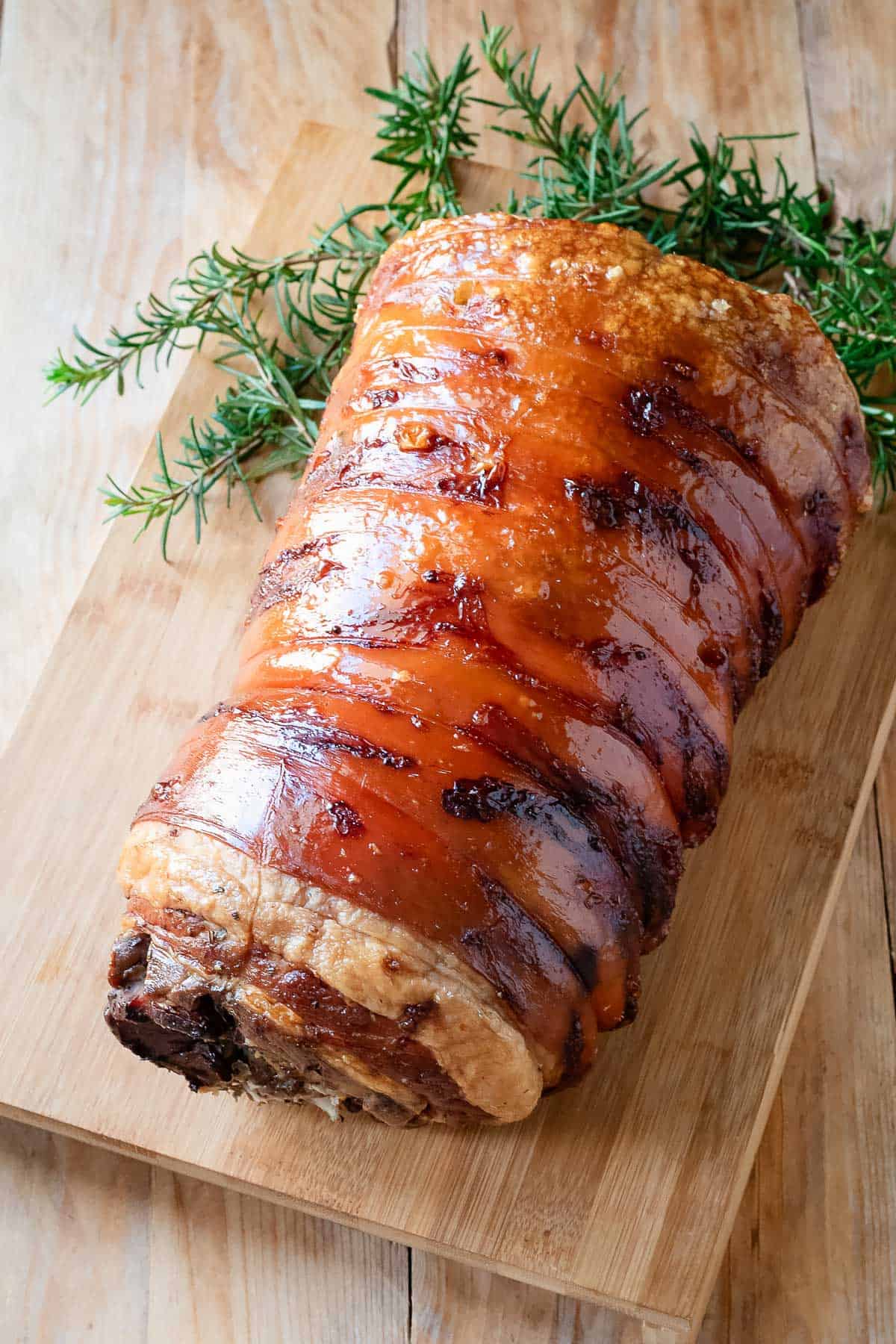
It's most frequently served as street food inside a delicious panino sandwich or prepared during big holidays and served with crispy Parmesan Potatoes as a main course.
How To Pronounce Porchetta
Porchetta is pronounced as por-KET-ta. Emphasize the second syllable: "KET".
The Rule: The "ch" in Italian is pronounced like a "k" sound in English.
So, it’s por-KET-ta, with a clean, sharp "k" sound in the middle!
Try it also in bruschetta. The correct pronunciation emphasizes the hard "k" sound and is pronounced as "broo-SKEH-tah."
Table Of Contents
Ingredients
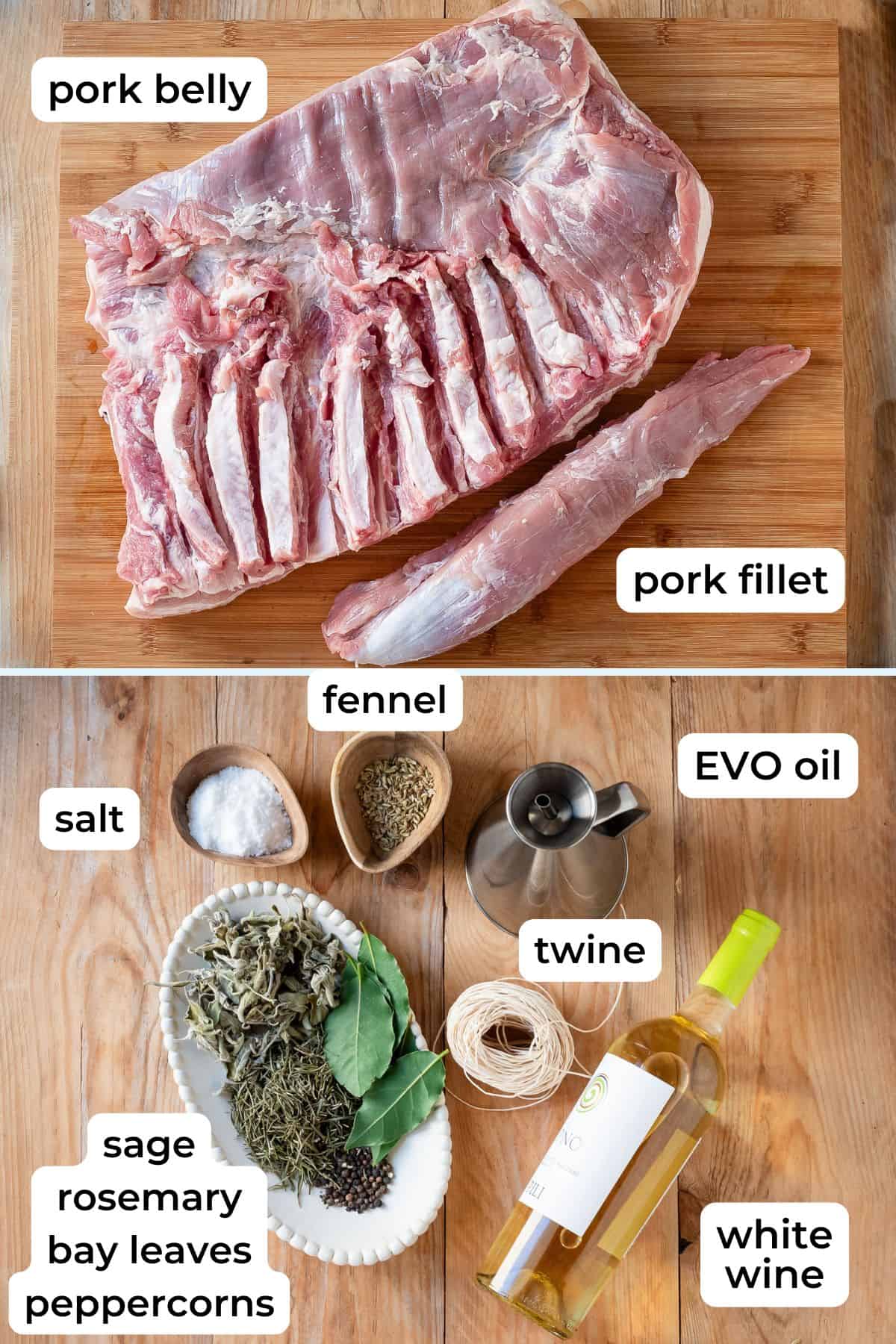
- Pork belly - consider you’ll need to roll it into a log so make sure it a nice rectangular shape. Mine was 30x40 cm
- Pork fillet - or pork tenderloin will be rolled in the middle of the pork belly and will provide the lean part of the porchetta.
- Herbs - sage, rosemary, bay leaves, whole peppercorns, fennel seeds or fennel pollen if you can find it. I highly recommend using all dry herbs, possibly while and grind them yourself. If that’s not an option use what you have on hand.
- Garlic - I like to slice a few garlic cloves and place such kind of garlic slivers between the meat cuts. Alternatively you can roughly chop it with a knife.
- Dry white wine, olive olive oil and salt for rubbing.
How To Make Step By Step
See the recipe card for full information on ingredients and quantities.
Prepare the meat
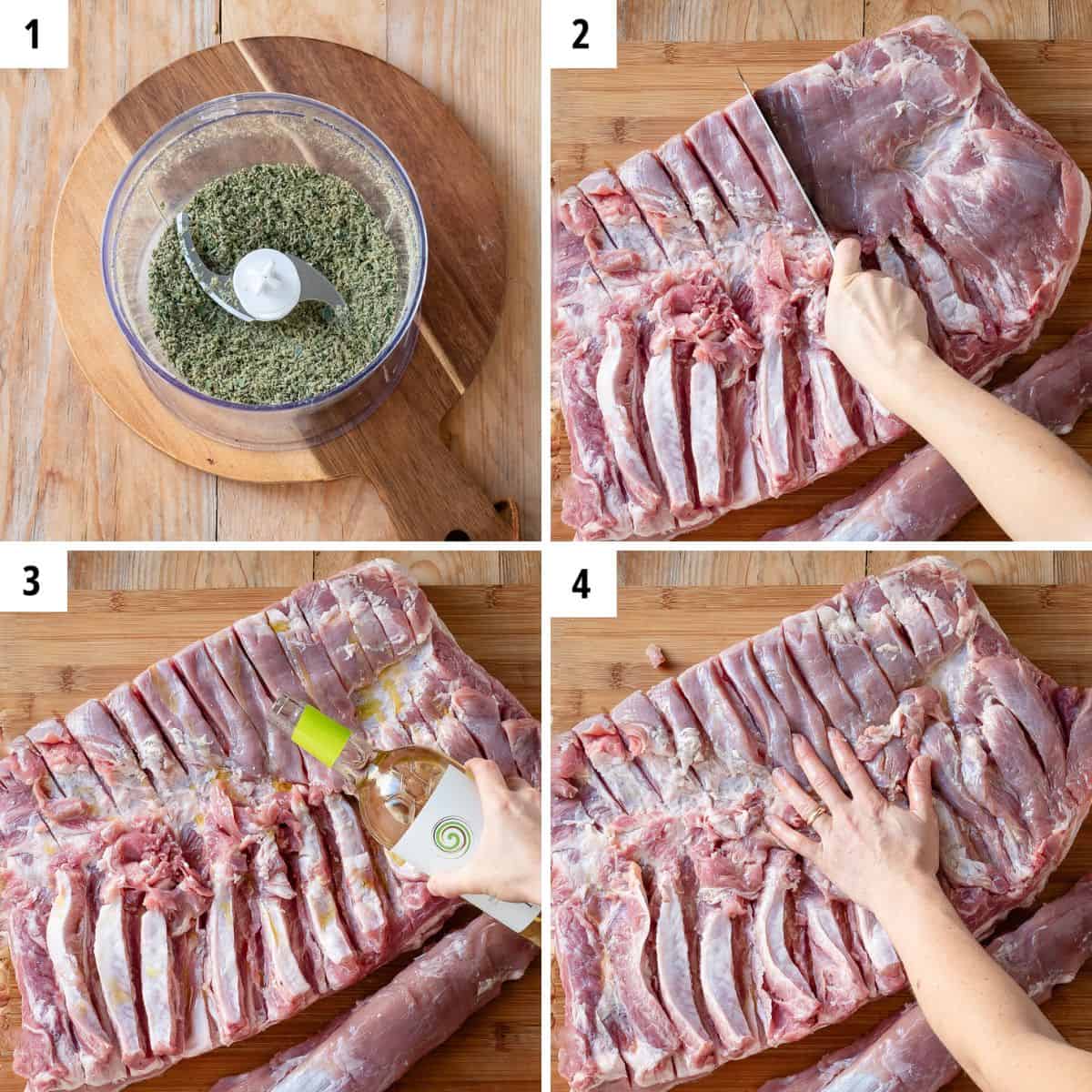
- Put all herbs in a food processor and pulse until finely grind (photo 1).
- Place pork belly skin side down on a work surface. Perform long cuts about ½ inch (1 cm) deep (photo 2). This will the meat better absorb all the aromatics so as facilitate rolling it into a log. Rub with salt also working it into the cuts.
- Pour wine and extra virgin olive oil (photo 3). Rub it into the meat. (photo 4).
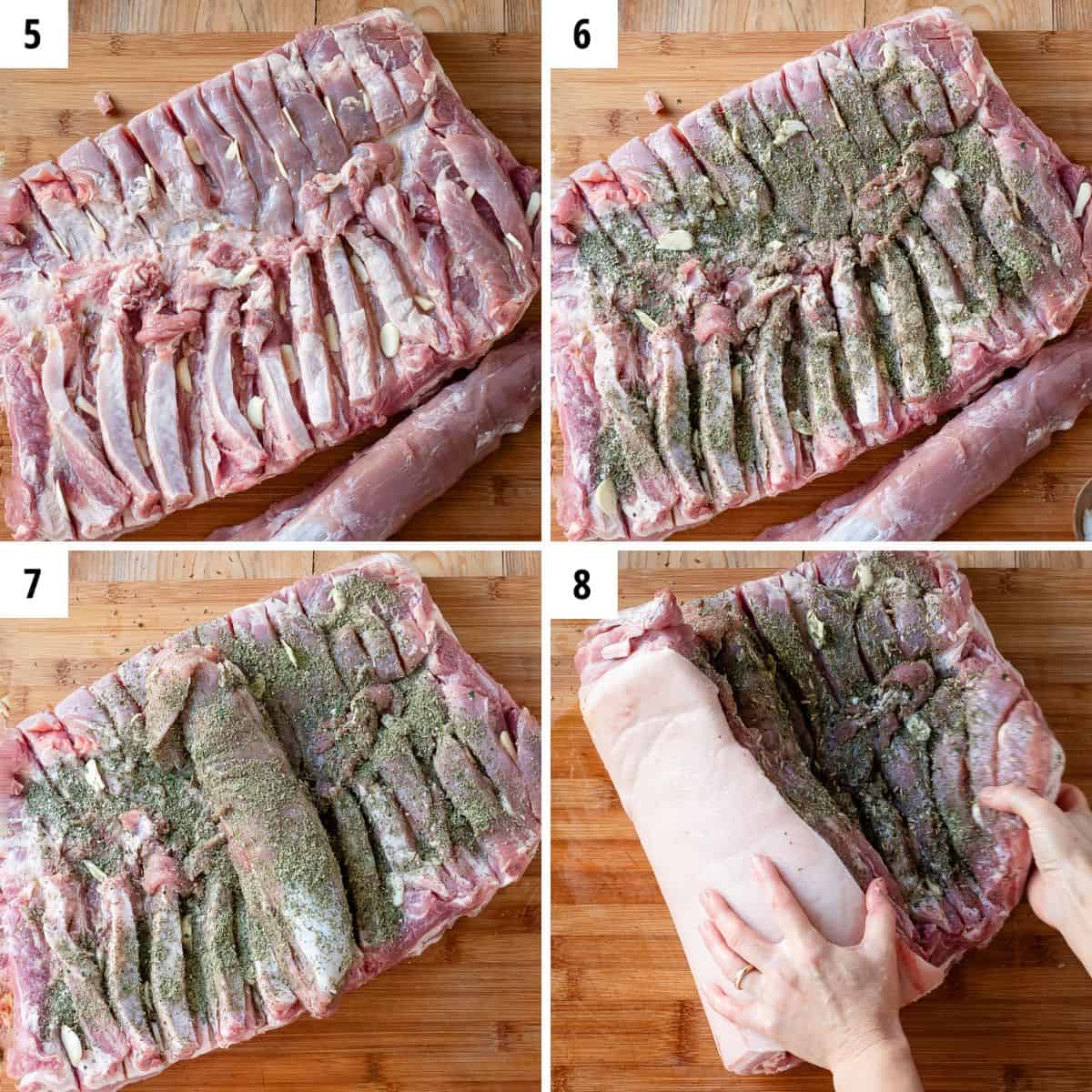
- Slice garlic cloves and place in-between the cuts in the meat (photo 5).
- Evenly coat the meat with herbs, saving a little for the pork fillet (photo 6).
- In the same manner rub pork fillet with wine, oil and herbs and arrange on the pork belly (photo 7).
- Roll the pork belly tightly into a cylinder (photo 8). Using kitchen twine, tie the roll at 1-inch intervals.
- Let porchetta rest for 2-3 hours at room temperature or in the fridge overnight.
How to Tie a Pork Roast
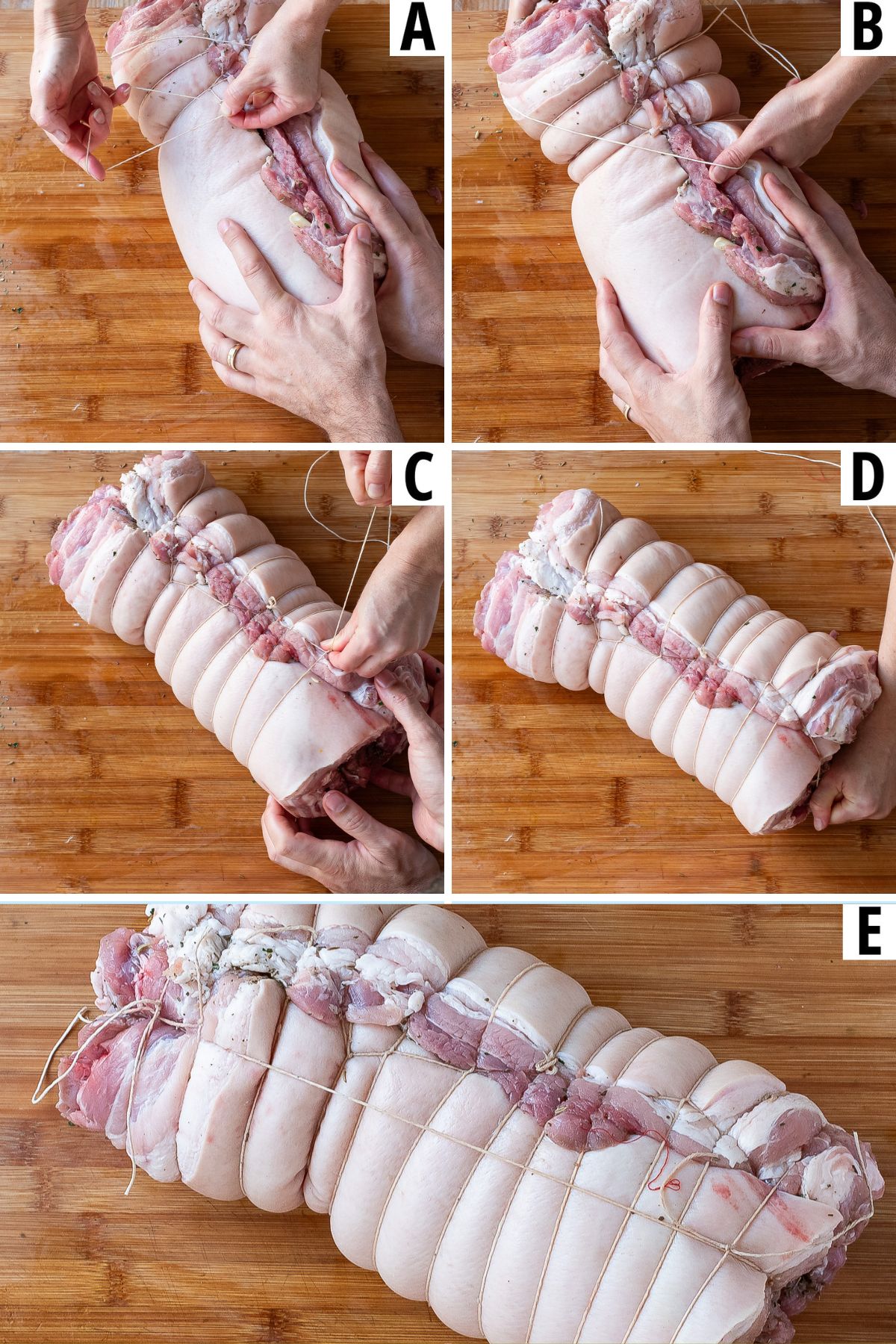
- Tie the first double knot. T
- Then make a wide lasso with the free end of the twine. Let the loop pass under the meat log positioning the twine about 1-inch apart from the first knot. Tie tight and make another lasso with the free end of the twine. Repeat the process until you’ve tied all the pork roast.
- Once you’ve reached the other end, pass the free end of the twine across the pork roast vertically and tight.
- A pair of helping hands are extra useful when tying the roast.
If you find it’s challenging to use lasso method, you can simply tie each double knot separately keeping the same 1 inch or so distance.
Right Before Roasting
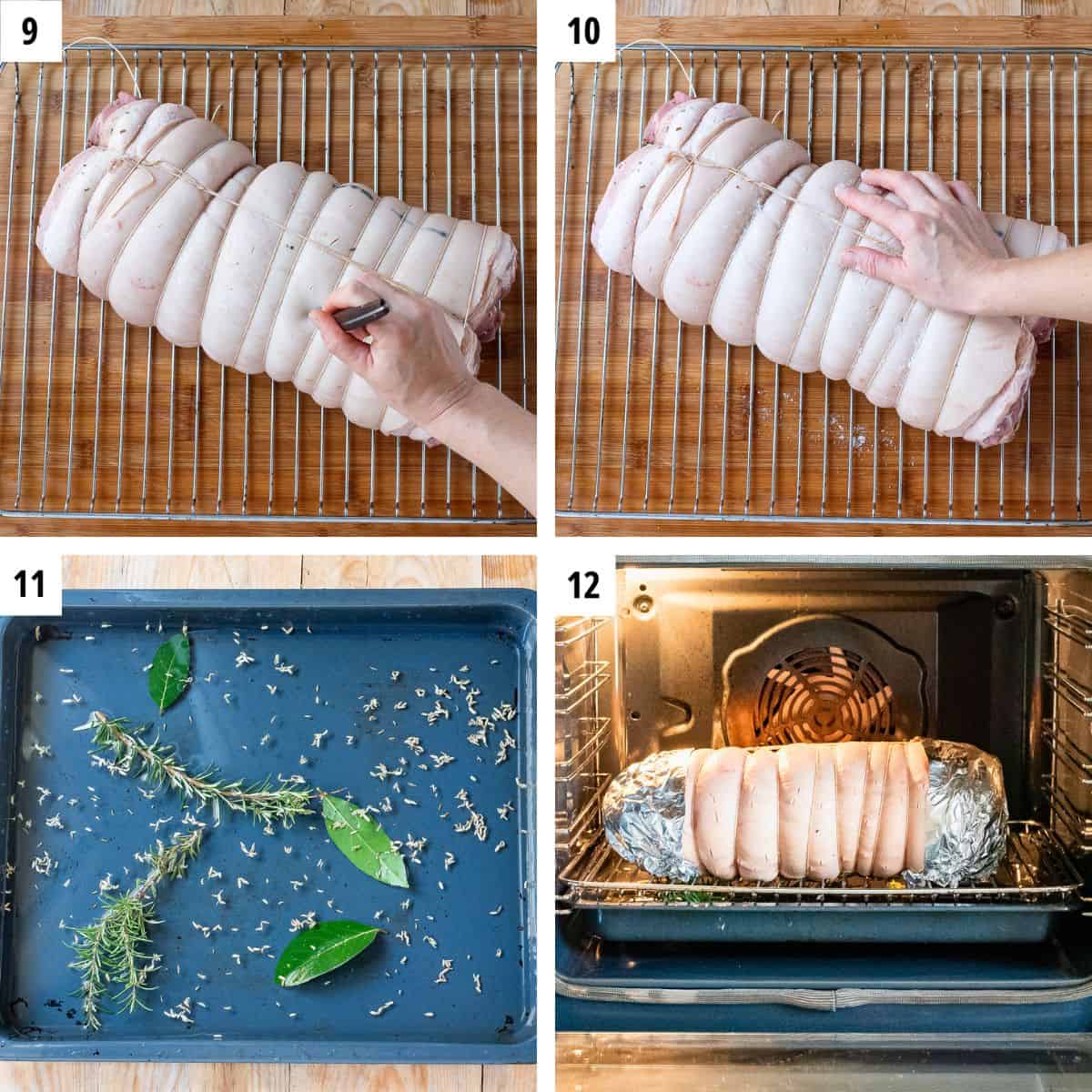
- When ready to roast, preheat oven to 355 F (180 C).
- Using a sharp knife poke holes all around the pork rind (photo 9). Rub it generously with salt (photo 10).
- Fill baking sheet with water, rosemary (fresh of dry), a few bay leaves and fennel seeds (photo 11).
- Place the baking sheet on the lowest rack in the oven. Wrap both ends of porchetta with aluminum foil to prevent from burning. Place porchetta on the wire rack right on top of the baking sheet filled with water (photo 12).
Cook in the oven
Cooking time indicated in the recipe is indicated for 12-13 pounds (5.5 kg) of meat. See below how to adjust cooking time depending on the size of your pork roast.
Phase 1
Bake in a preheat to 355 F (180 C) oven for 30 minutes.
Phase 2
Then lower the temperature to 245 F (120C) and bake for 3 hours.
Phase 3
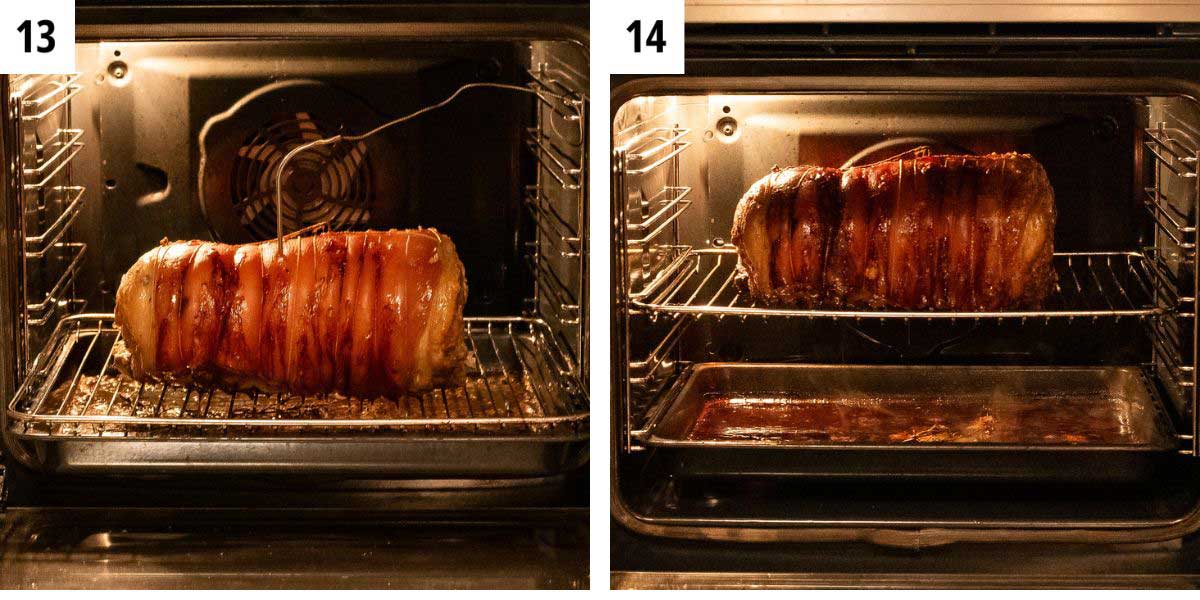
- Increase the temperature to 355 F (180 C) again and bake for another 30 minutes OR until the temperature at the core of porchetta has reached 160-162 C (71-72 C).
- I highly recommend using a thermometer inside porchetta (photo 13) and positioning it in the center (core) for most accurate and mostly important JUICY porchetta.
Phase 4
- Once the inside temperature of porchetta has reached 160-162 C (71-72 C), shift the wire rack with porchetta closer to the grill without touching it (photo 14). Turn up the temperature to 430 F (220 C) and roast for 3-5 minutes checking on porchetta frequently until skin is crispy but pay attention not to burn it.
- Porchetta is ready when it has reached temperature of 165 F (74 C) on the inside. If it goes higher than 170 F (76 C) you risk overcooking it which results in dry meat.
- Allow to rest for at least 30 minutes and up to 1 hours before serving.
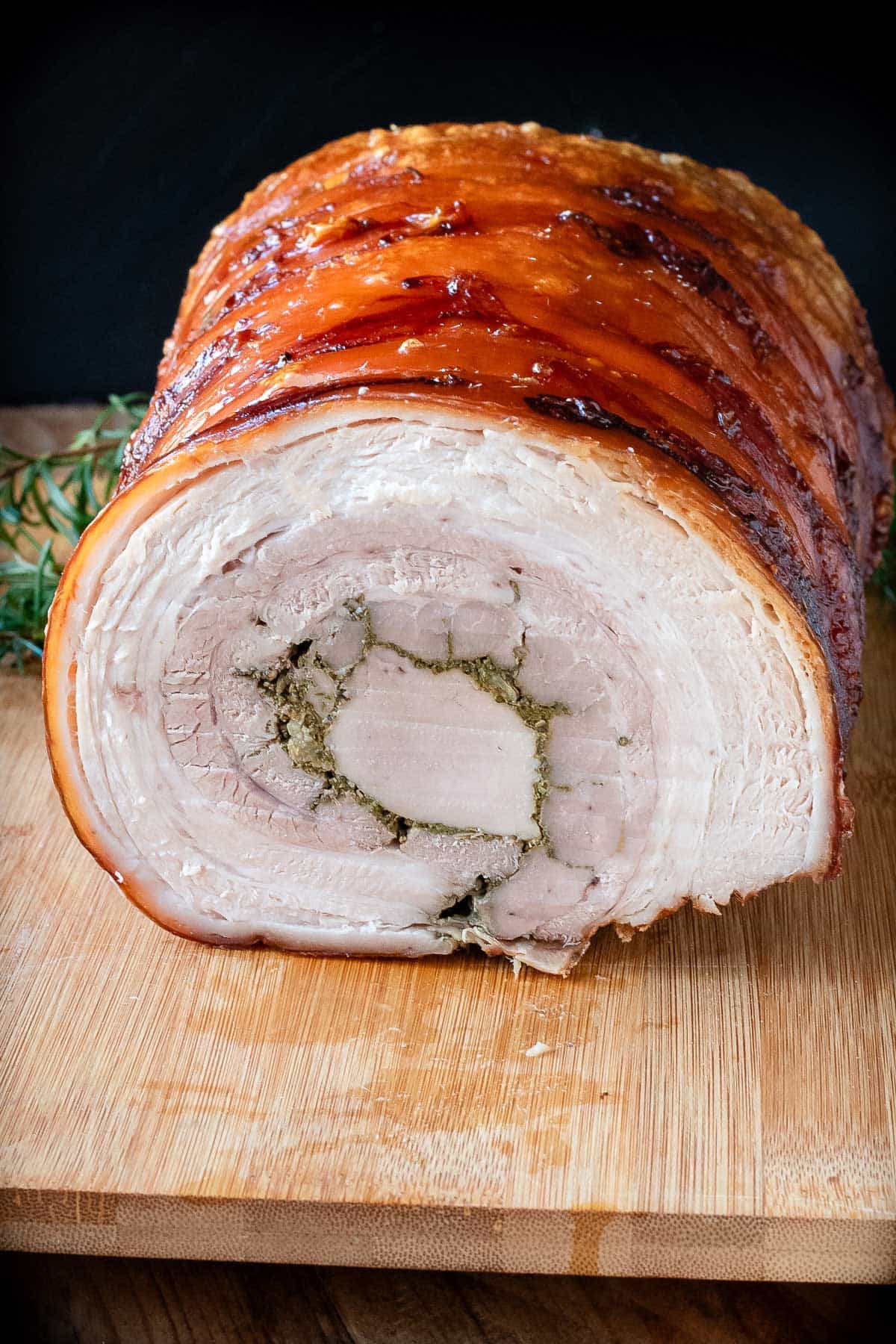
How to Adjust Cooking Time
Time in the recipe is indicated for 12-13 pounds (5.5 kg) of meat. If your porchetta is smaller or larger than that you'll need to calculate and adjust cooking time accordingly.
Consider 20 minutes of cooking time for every pound of meat, or 45 minutes for every kilo. Use the following formula below to calculate time at each temperature.
- Weight in pounds:
- Total weight in pounds x 20 = Total cooking time (besides last few minutes under the grill)
- Phase 1 (Cooking at 355 F) = Total time / 8
- Phase 2 (Cooking at 245 F) = Total time x 0.75
- Phase 3 (Cooking at 355 F) = Total time / 8
- Phase 4 (Cooking at 430 F) - as indicated in the recipe
- Weight in kilos:
- Total weight in kilos x 45 = Total cooking time (besides the last few minutes under the grill - Phase 4)
- Phase 1 (Cooking at 180 C) = Total time / 8
- Phase 2 (Cooking at 120 C) = Total time x 0.75
- Phase 3 (Cooking at 180 C) = Total time / 8
- Phase 4 (Cooking at 220 C) - as indicated in the recipe
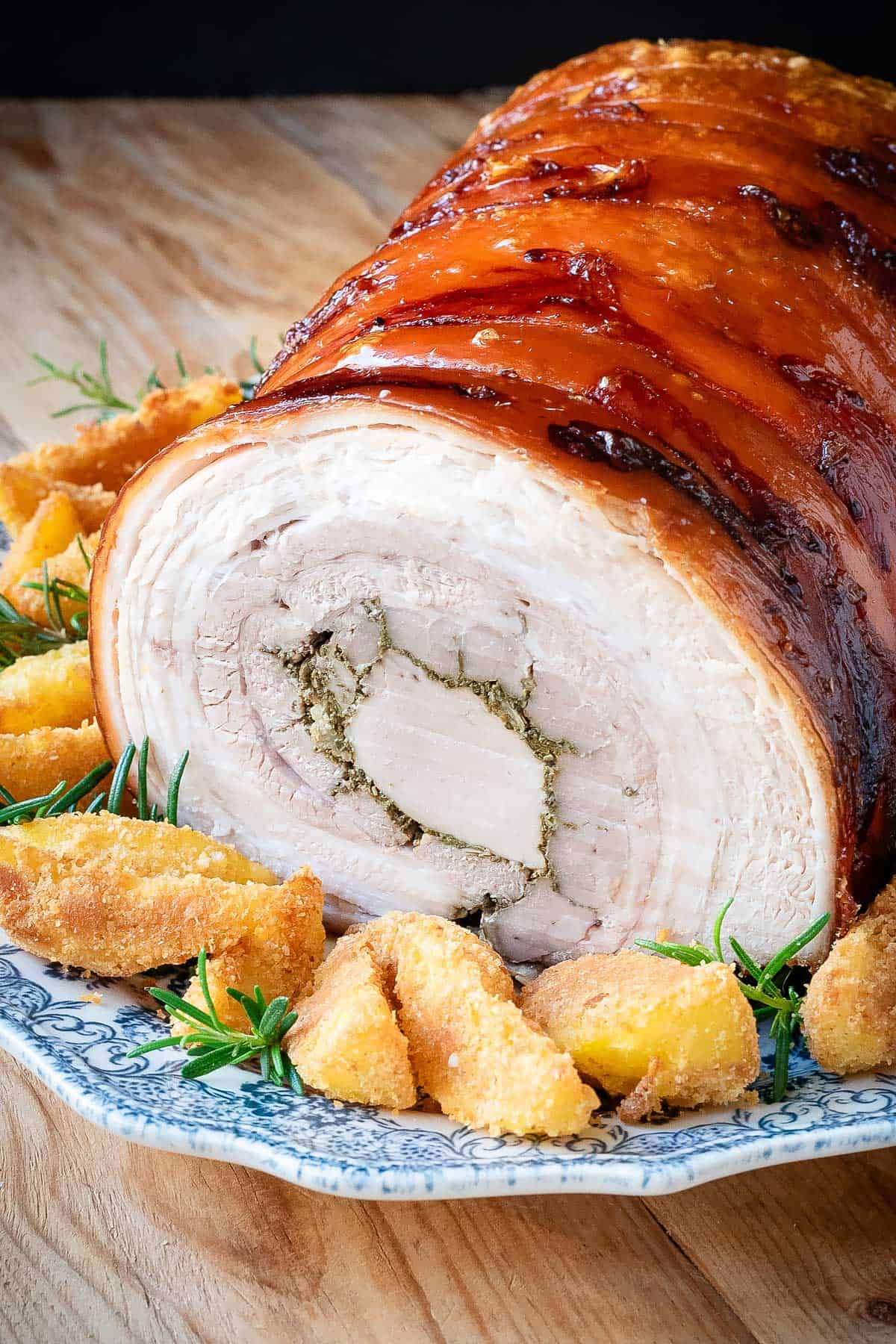
Make Ahead
You can easily prepare it even a few days in advance. Once porchetta is cooked, let it cool completely at room temperature, typically overnight. You can store it in the fridge wrapped in foil and plastic wrap for up to 5 days.
When ready to serve, reheat in the oven 160C for 15-20 minutes. If reheating from the fridge, let it sit at to room temperature for at least 2-3 hours.
Leftovers
If you have any leftovers, divide it into thick slices, wrap in a foil and plastic wrap and store in the freezer. When ready to consumer thaw, cut in cubes and roast in a hot pan. It'll turn super flavorful and juicy because of the melted fat.
3 More Ways to Use It:
- Stuff panini bread to make sandwiches (cut in cubes and roast).
- Use instead of pancetta / prosciutto when used as a base in recipes like Ragu Alla Bolognese or in Minestrone soup.
- Cut in cubes and roast leftover porchetta then add to it leftover Italian mushrooms and sugo di pomodoro or tomato sauce. Simmer for a few minutes and you'll have a quick, lazy ragu ready to season pasta or serve with polenta or mashed potatoes.
Serve It With

Love Italian Food?
Sign up for our weekly newsletter to receive tips, tricks and new recipes delivered straight to your inbox!
Full Recipe
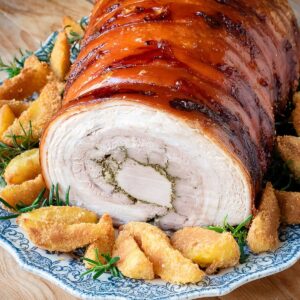
Porchetta (Italian Pork Roast)
Ingredients
- 10-11 pounds pork belly , about 5 kg
- 1 pork tenderloin , about between 500-700 grams
For the rub:
- dry white wine
- extra virgin olive oil
- 3-4 garlic cloves
- ¼ cup dried rosemary sprigs
- ½ cup dried sage
- 5 bay leaves
- 3 tablespoon whole peppercorns
- 1 tablespoon fennel seeds , or more to taste
- 2.5 tablespoon salt , divided (1.5 tablespoon for the meat - 1 tablespoon for the outer skin). Equivalent of 36 grams total or 3 grams for every pound of meat or 6 grams per every kilo.
For cooking:
- 2 rosemary sprigs
- 2 bay leaves
- 1 tablespoon fennel seeds
Instructions
Prepare the meat
- Put all herbs in a food processor and pulse until finely grind.
- Place pork belly skin side down on a work surface. Perform long cuts about ½ inch (1 cm) deep. This will the meat better absorb all the aromatics so as facilitate rolling it into a log. Rub with salt also working it into the cuts.
- Pour wine and extra virgin olive oil. Rub it into the meat.
- Slice garlic cloves and place in-between the cuts in the meat.
- Evenly coat the meat with herbs, saving a little for the pork fillet.
- In the same manner rub pork fillet with wine, oil and herbs and arrange on the pork belly.
- Roll the pork belly tightly into a cylinder.
- Using kitchen twine, tie the roll at 1-inch intervals.
- Let porchetta rest for 2-3 hours at room temperature or in the fridge overnight.
Before roasting
- When ready to roast, preheat oven to 350 F (180 C).
- Using a sharp knife poke holes all around the pork rind. Rub it generously with salt.
- Fill baking sheet with water, rosemary (fresh of dry), a few bay leaves and fennel seeds. Place the baking sheet on the lowest rack in the oven. Wrap both ends of porchetta with aluminum foil to prevent from burning. .
- Place porchetta on the wire rack right on top of the baking sheet filled with water
Cooking Phase 1
- Bake in a preheat to 355 F (180 C) oven for 30 minutes.
Cooking Phase 2
- Then lower the temperature to 245 F (120C) and bake for 3 hours.
Cooking Phase 3
- Increase the temperature to 355 F (180 C) again and bake for another 30 minutes OR until the temperature at the core of porchetta has reached 160-162 C (71-72 C). I highly recommend using a thermometer inside porchetta and positioning it in the center (core) for the most accurate and most important JUICY porchetta.
Cooking Phase 4
- Once the inside temperature of porchetta has reached 160-162 C (71-72 C), shift the wire rack with porchetta closer to the grill without touching it. Turn up the temperature to 430 F (220 C) and roast for 3-5 minutes checking on porchetta frequently until skin is crispy but pay attention not to burn it.
- Porchetta is ready when it has reached temperature of 165 F (74 C) on the inside. If it goes higher than 170 F (76 C) you risk overcooking it which results in dry meat.
Let rest and serve
- Allow to rest for at least 30 minutes and up to 1 hours before serving.
Notes
- Tie the first double knot then make a wide lasso with the free end of the twine. Let the loop pass under the meat log positioning the twine about 1-inch apart from the first knot. Tie tight and make another lasso with the free end of the twine. Repeat the process until you’ve tied all the pork roast.
- Once you’ve reached the other end, pass the free end of the twine across the pork roast vertically and tight.
- A pair of helping hands are extra useful when tying the roast.
- If you find it’s challenging to use lasso method, you can simply tie each double knot separately keeping the same 1 inch or so distance.
- Total weight in pounds x 20 = Total cooking time (besides Phase 4)
- Phase 1 (Cooking at 355 F) = Total time / 8
- Phase 2 (Cooking at 245 F) = Total time x 0.75
- Phase 3 (Cooking at 355 F) = Total time / 8
- Phase 4 - as indicated in the recipe
- Total weight in kilos x 45 = Total cooking time (besides Phase 4)
- Phase 1 (Cooking at 180 C) = Total time / 8
- Phase 2 (Cooking at 120 C) = Total time x 0.75
- Phase 3 (Cooking at 180 C) = Total time / 8
- Phase 4 - as indicated in the recipe
Nutrition
Nutrition information is automatically calculated, so should only be used as an approximation.

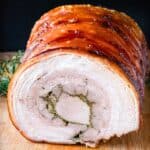


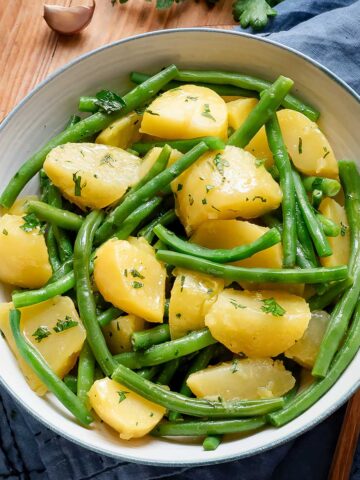
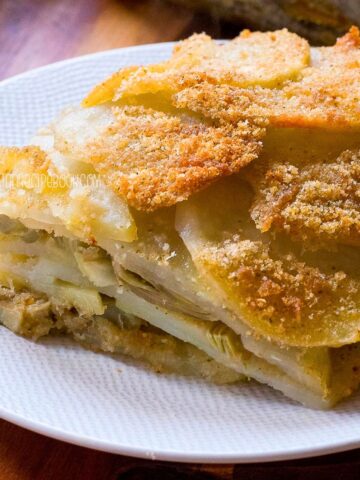
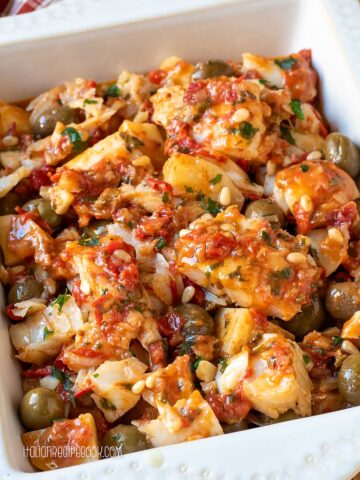
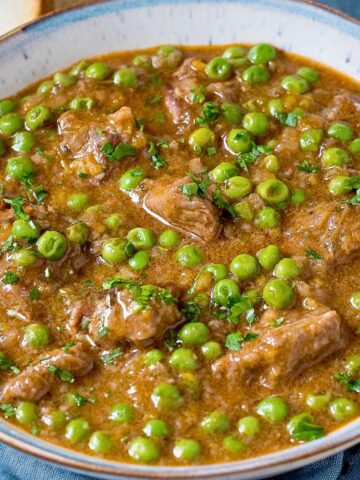
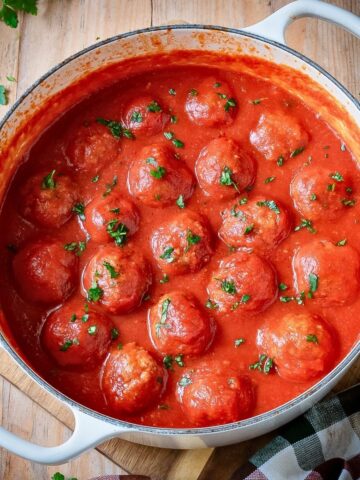
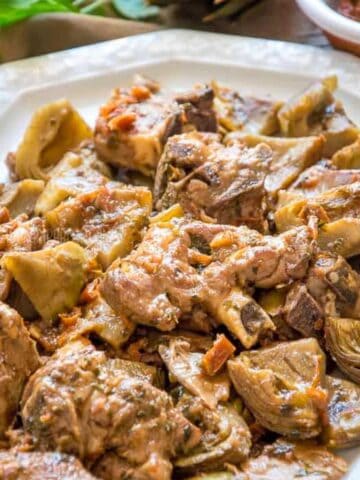
Marie-Catherine Majumdar says
This cut of meat is never seen in American markets - and not every town has a butcher shop. They sell something they call Porchetta but it is a very lean cut of meat. I remember something like this from my childhood in New York but unfortunately ( for meat shopping) I don’t live there anymore.